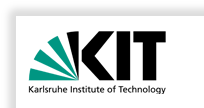| [bungartz13invasive] | Hans-Joachim Bungartz, Christoph Riesinger, Martin Schreiber, Gregor Snelting, Andreas Zwinkau, Invasive computing in HPC with X10, Proceedings of the third ACM SIGPLAN X10 Workshop, pp. 12--19, ACM, New York, NY, USA, 2013.
|
Abstract
High performance computing with thousands of cores relies on distributed memory due to memory consistency reasons.
The resource management on such systems usually relies on static assignment of resources at the start of each application.
Such a static scheduling is incapable of starting applications with required resources being used by others since a reduction of resources assigned to applications without stopping them is not possible.
This lack of dynamic adaptive scheduling leads to idling resources until the remaining amount of requested resources gets available.
Additionally, applications with changing resource requirements lead to idling or less efficiently used resources.
The invasive computing paradigm suggests dynamic resource scheduling and applications able to dynamically adapt to changing resource requirements.
As a case study, we developed an invasive resource manager
as well as a multigrid with dynamically changing resource demands.
Such a multigrid has changing scalability behavior during its execution and
requires data migration upon reallocation due to distributed memory systems.
To counteract the additional complexity introduced by the additional interfaces, e.g. for data migration,
we use the X10 programming language for improved programmability.
Our results show improved application throughput and we evaluate the dynamic adaptivity.
In addition, we show our extension for the distributed arrays of X10 to support data migration.
Download
BibTeX
Authors at the institute
Projects

